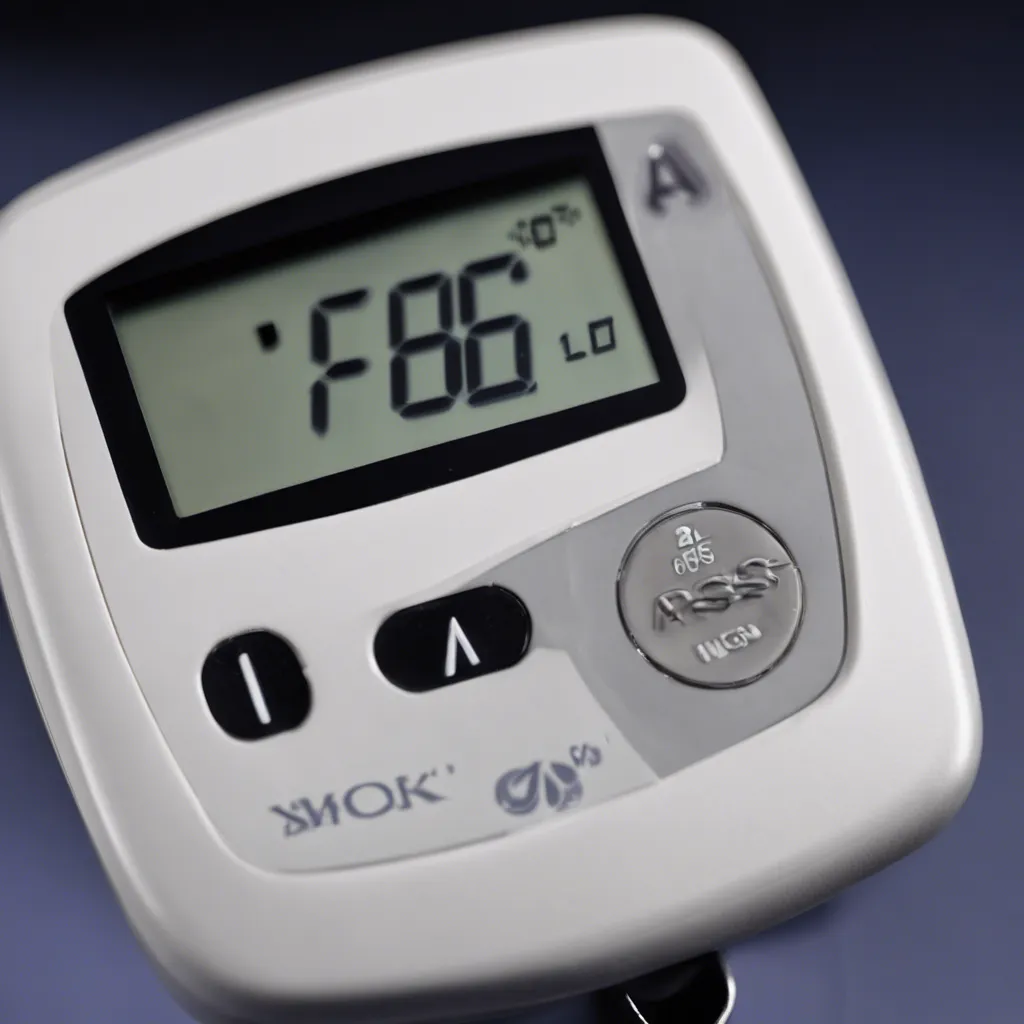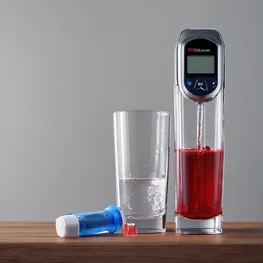Table of contents
- The Complete Guide to Understanding Blood Sugar Levels
- Enhancing Blood Sugar Monitoring with Advanced Technologies
- Making Sense of Blood Glucose Readings
- Tips for Balancing Blood Sugar Levels
- A Comprehensive Guide to Managing Diabetes Through Blood Sugar Monitoring
Blood sugar testing plays a vital role in managing diabetes and maintaining overall health. But have you ever wondered about the science behind this important procedure? In this article, we delve into the intricacies of blood sugar testing, exploring how it works, why it's necessary, and the key insights it provides for individuals with diabetes. Join us as we unravel the science behind this crucial aspect of healthcare.
The Complete Guide to Understanding Blood Sugar Levels
Understanding blood sugar levels is essential for maintaining overall health. Throughout the day, blood sugar levels can fluctuate for several reasons. Here are some important points to help you learn about normal blood sugar levels and how they can vary:
- Normal blood sugar levels typically range between 70-130 mg/dL (3.9-7.2 mmol/L) before meals and less than 180 mg/dL (10 mmol/L) after meals.
- Factors such as physical activity, stress, illness, and medications can influence blood sugar levels.
- The body's hormone called insulin plays a key role in regulating blood sugar levels by ensuring glucose enters cells for energy.
- Maintaining stable blood sugar levels is crucial for individuals with diabetes as high or low levels can have serious health consequences.
- Eating a balanced diet filled with whole grains, lean proteins, fruits, and vegetables can help stabilize blood sugar levels.
- Frequent monitoring of blood sugar levels through regular testing is crucial for individuals with diabetes to manage their condition effectively.
- Engaging in regular exercise can help improve insulin sensitivity and keep blood sugar levels in check.
- Monitoring carbohydrate intake is important as carbs can significantly impact blood sugar levels.
- Sleep quality and duration can affect blood sugar regulation, and individuals experiencing sleep disturbances may experience higher blood sugar levels.
- Working closely with healthcare professionals and following their advice is vital for individuals with diabetes to maintain healthy blood sugar levels.
Enhancing Blood Sugar Monitoring with Advanced Technologies
Monitoring blood sugar levels is crucial for individuals with diabetes to manage their condition effectively. With advancements in technology, there are now various ways to measure blood sugar levels beyond traditional fingerstick testing. Let's explore some of these methods:
-
Fingerstick Testing
Fingerstick testing involves pricking the finger with a lancet and using a blood glucose meter to measure the sugar levels in a drop of blood. This method provides immediate results and is relatively inexpensive. However, it requires regular pricking, which can be painful and inconvenient.
-
Continuous Glucose Monitoring (CGM)
CGM is an advanced technology that involves wearing a sensor under the skin to measure glucose levels continuously. The sensor automatically transmits data wirelessly to a receiver or smartphone, providing real-time glucose readings. CGM allows individuals to monitor their blood sugar levels throughout the day and night, helping them make informed decisions about insulin doses, diet, and physical activity. It also provides trend data, revealing patterns and helping identify glucose fluctuations that might go unnoticed with traditional testing.
-
Flash Glucose Monitoring
Flash glucose monitoring is a newer technology that combines the benefits of both fingerstick testing and CGM. It involves wearing a sensor on the back of the upper arm and scanning it with a handheld reader to obtain glucose readings. It provides historical glucose data, enabling individuals to review trends and make adjustments to their treatment plan. Additionally, it offers convenience as it does not require finger pricking.
Making Sense of Blood Glucose Readings
Understanding your blood sugar readings is crucial for managing your overall health. By interpreting these readings, you can gain valuable insights into your body's functioning and take necessary actions to maintain optimal health.
- Know the normal range: The normal blood sugar range for most adults is between 70 and 130 mg/dL before meals and less than 180 mg/dL after meals. Any reading outside this range may indicate a problem.
- Identify high blood sugar: High blood sugar levels, known as hyperglycemia, can be a sign of diabetes or insulin resistance. Symptoms may include excessive thirst, frequent urination, fatigue, blurred vision, and slow wound healing.
- Recognize low blood sugar: Low blood sugar levels, called hypoglycemia, can occur in people with diabetes who take insulin or certain medications. Symptoms may include headache, confusion, dizziness, sweating, and irritability.
- Understand the impact of exercise and diet: Regular physical activity and maintaining a healthy diet can help regulate blood sugar levels. Exercise increases insulin sensitivity, while a balanced diet provides proper nutrients.
- Consult with a healthcare professional: If you consistently have high or low blood sugar readings, it's important to consult with a healthcare professional. They can help you analyze the readings, provide guidance, and adjust your treatment plan if needed.
Tips for Balancing Blood Sugar Levels
Maintaining balanced blood sugar levels is crucial for overall health and well-being. Fortunately, there are several lifestyle changes that can effectively regulate blood sugar levels and promote better glucose control. By incorporating regular exercise and stress management techniques into your daily routine, you can make a significant impact on your blood sugar levels and reduce the risk of developing chronic conditions such as diabetes. Here are some tips to help you balance your blood sugar levels:
-
1. Engage in regular exercise
Physical activity plays a pivotal role in regulating blood sugar levels. Aim for at least 150 minutes of moderate-intensity aerobic exercise per week, such as brisk walking, cycling, or swimming. Regular exercise improves insulin sensitivity, allowing your body to efficiently utilize glucose for energy. It also helps to maintain a healthy weight and reduces the risk of insulin resistance.
-
2. Practice stress management
Chronic stress can elevate blood sugar levels and contribute to poor glucose control. Incorporate stress management techniques into your daily routine, such as meditation, deep breathing exercises, yoga, or engaging in relaxing hobbies. These activities help to reduce stress hormone levels and promote a sense of calm, which can positively impact blood sugar regulation.
A Comprehensive Guide to Managing Diabetes Through Blood Sugar Monitoring
Managing diabetes can be a challenging task, but frequent blood sugar testing can be a valuable tool to help individuals with diabetes effectively manage their condition.
- Regular blood sugar testing provides individuals with diabetes with important information about their glucose levels at any given time.
- By monitoring blood sugar levels regularly, individuals can quickly identify and address any fluctuations or abnormalities.
- Frequent testing allows individuals to make necessary changes in their diet, exercise routine, and medication as required to maintain stable blood sugar levels.
- Blood sugar testing helps individuals understand how different factors such as food choices, physical activity, stress, and medication impact their glucose levels.
- Through consistent monitoring, individuals can learn to recognize patterns and understand how their body responds to various stimuli.
- By maintaining optimal blood sugar levels, individuals can minimize the risk of long-term complications associated with diabetes, such as nerve damage, heart disease, and kidney damage.
- Regular blood sugar testing provides valuable data for healthcare professionals, enabling them to make informed decisions regarding medication adjustments and treatment plans.
- Furthermore, blood sugar testing encourages individuals to take an active role in their diabetes management, enhancing their overall sense of control and empowerment.
- Overall, frequent blood sugar testing is a crucial component of managing diabetes, allowing individuals to make timely adjustments and maintain optimal glucose levels.
In conclusion, blood sugar testing is a vital tool in managing diabetes and other conditions related to glucose regulation. The accuracy of these tests relies on the calibration and performance of the devices used. It is crucial for individuals with diabetes to understand how blood sugar levels fluctuate throughout the day and to work closely with their healthcare providers to monitor and control their glucose levels effectively. Regular monitoring can help prevent complications associated with high or low blood sugar and ultimately lead to better management of diabetes.
Frequently asked questions related to how does blood sugar testing work
Why is blood sugar testing important?
Blood sugar testing is important for monitoring and managing diabetes. It helps individuals with diabetes to understand how their blood sugar levels fluctuate throughout the day and allows them to make informed decisions about their diet, medication, and lifestyle.
Who should perform blood sugar testing?
Blood sugar testing is typically performed by individuals with diabetes. However, it may also be recommended for individuals who are at risk of developing diabetes or have other conditions that affect blood sugar levels, such as polycystic ovary syndrome (PCOS) or gestational diabetes.
Are there any factors that can affect blood sugar test results?
Yes, there are several factors that can affect blood sugar test results. These include the timing and content of meals, physical activity levels, medication or insulin use, stress levels, illness, and certain medications. It is important to be aware of these factors and take them into consideration when interpreting blood sugar test results.
What are the target blood sugar ranges?
Target blood sugar ranges can vary depending on individual factors, such as age, overall health, and the presence of other medical conditions. In general, the American Diabetes Association (ADA) recommends target blood sugar ranges of 80-130 mg/dL before meals and less than 180 mg/dL after meals for adults with diabetes.
What should I do if my blood sugar levels are too high or too low?
If blood sugar levels are too high (hyperglycemia), it is important to follow the guidance of healthcare professionals, which may include adjusting medication or insulin doses, increasing physical activity, and making dietary changes. If blood sugar levels are too low (hypoglycemia), immediate treatment with a source of fast-acting glucose, such as fruit juice or glucose tablets, is usually recommended.
Can blood sugar testing help in preventing diabetes?
Blood sugar testing alone cannot prevent diabetes, but it can help identify individuals at risk and provide early intervention. Regular blood sugar testing can also be part of a comprehensive diabetes prevention plan that includes lifestyle modifications such as regular exercise, healthy eating, weight management, and avoiding tobacco and excessive alcohol consumption.
What are the different methods for blood sugar testing?
There are several methods for blood sugar testing, including fingerstick testing, continuous glucose monitoring (CGM), and flash glucose monitoring. Fingerstick testing involves pricking the fingertip and using a blood glucose meter to measure blood sugar levels. CGM uses a sensor inserted under the skin to continuously monitor glucose levels. Flash glucose monitoring involves scanning a sensor worn on the upper arm to obtain blood glucose readings.
How often should blood sugar testing be done?
The frequency of blood sugar testing depends on individual circumstances and the recommendation of healthcare professionals. People with type 1 diabetes may need to test their blood sugar multiple times a day, while those with type 2 diabetes may need to test less frequently, such as before meals or when experiencing symptoms of high or low blood sugar.







